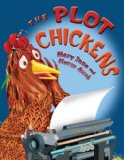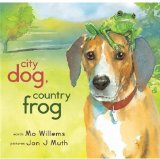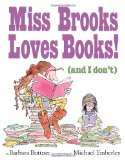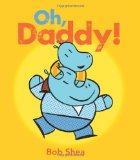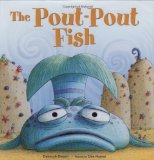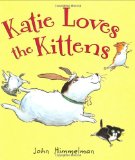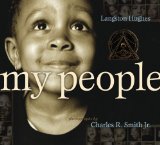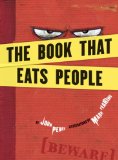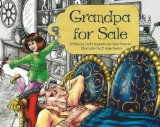Top Ten Tuesday – Books for Babies
It’s Top Ten Tuesday!
For a long time, the idea has been simmering that I should post my favorite books in different categories. I think it started when Betsy Bird of the Fuse #8 blog had her readers vote on their 10 favorite picture books, and later our 10 favorite books for middle readers.
The idea was still simmering until a couple weeks ago, when I met with a team of child care specialists as part of my new job working for the Fairfax County Office for Children, Provider Services. I wanted to be able to contribute to the team some of my experience as a children’s librarian, so they suggested that I put together lists of books for different age ranges of children, so they could give these lists to new child care providers.
Needless to say, it was a fun assignment! I made lists of my ten top choices for recommendations for children at several different age levels, with plenty of overlap. (The best books for children will be good for a wide variety of ages, so these are not hard and fast.)
So now I had several top ten lists, and I thought I’d better share them. I’ve got a new page on my main website, called Sondy’s Selections. I thought it would be even more fun if I could get other people to contribute their own top ten lists for the various categories. Since the choices are very personal, it would be nice to hear about other great books that you have enjoyed.
I’ll provide a link to Amazon for the books I haven’t reviewed yet, so you can get more information. (And if you order the book through my link, I get a small percentage.) If I’ve reviewed the book, the title link will take you to my review (which also has an Amazon link).
So, this week I’m starting with books for babies — ages 0 to 2. (Next week will be ages 2-3.) Please post in the comments your own top ten list! Or any good books for this age group that I’ve missed. Or better yet, a link to your own Top Ten Tuesday blog entry.
Here’s my first list of Sondy’s Selections:
Ages 0-2
Blue Hat, Green Hat, by Sandra Boynton
The ultimate toddler book, this board book presents colors and items of clothing – and a turkey who always gets it wrong. Oops!
Ten Little Fingers and Ten Little Toes, by Mem Fox, illustrated by Helen Oxenbury
This sweet-as-can-be picture book celebrates the love of all babies everywhere – especially your very own baby.
Where’s Spot? by Eric Hill
A classic lift-the-flap book has Spot’s mother looking for him, but finding many other animals.
Dear Zoo, by Rod Campbell
Another lift-the-flap book has the zoo sending a child bigger and bigger pets until they finally send just the right one.
Freight Train, by Donald Crews
Simple irresistible text shows different colored train cars traveling by.
Good Night Moon, by Margaret Wise Brown, illustrated by Clement Hurd
The classic bedtime book to soothe toddlers to sleep.
More, More, More, Said the Baby, by Vera B. Williams
The opposite of soothing, this book has a built in tickle game.
Is Your Mama a Llama? by Deborah Guarino, illustrated by Steven Kellogg
This book uses rhymes to help a child guess which mama animal is coming next.
Peek-a Who? by Nina Laden
A simple rhyming board book with holes to peek through and guess who’s hiding on the next page – ending up with a mirror to see Baby.
Cat the Cat Who Is That? by Mo Willems
Cat the Cat meets an assortment of new friends until she meets one that defies naming.
Enjoy!
